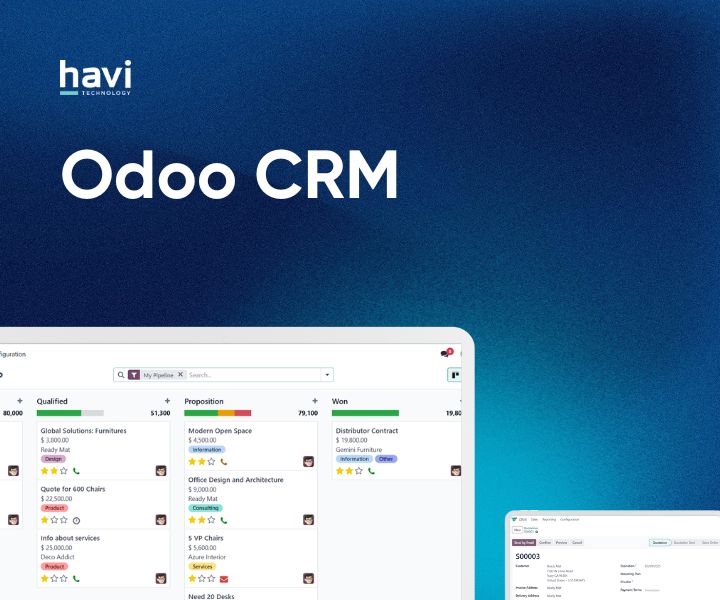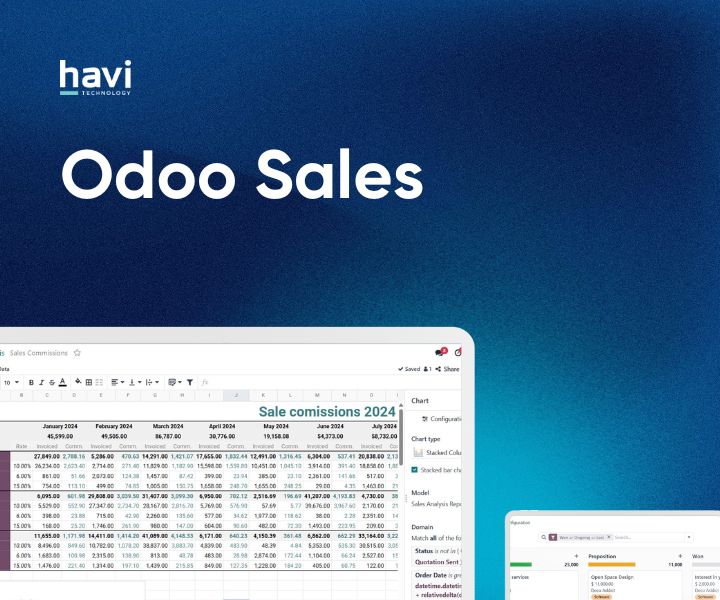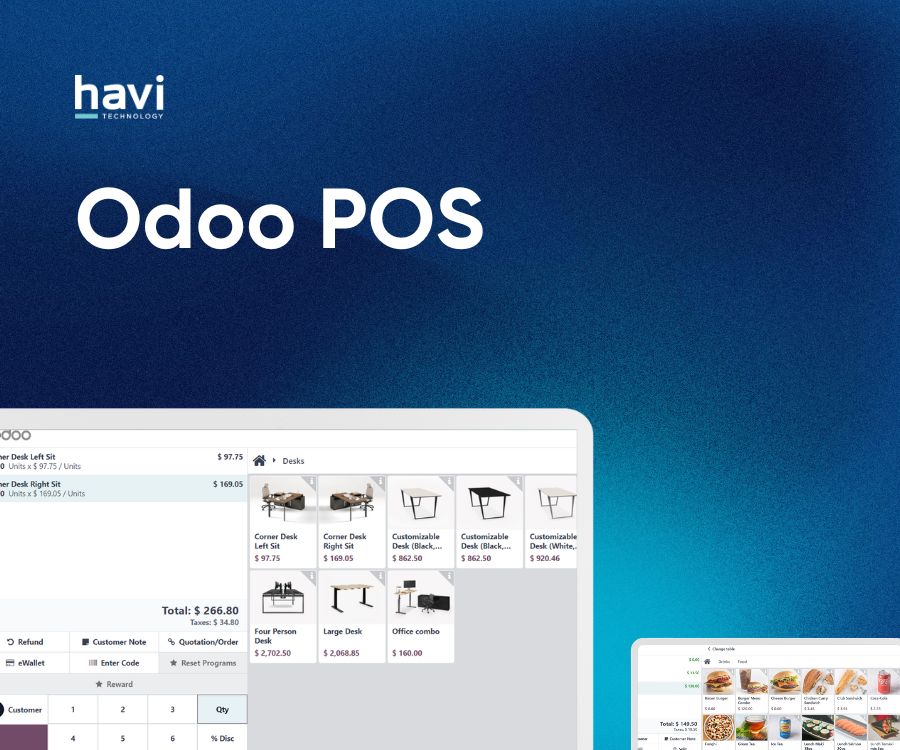TABLE OF CONTENTS
- 1. Website and Customer Experience
- 1.1. Website & eCommerce: Guided Onboarding, New Templates, Google Merchant Sync
- 1.2 Live Chat and Discuss: Expertise Routing, Chat Insights, Status Controls
- 2. Sales, CRM and Subscriptions
- 2.1 Sales: Editable Optional Products, Catalogue Sections, Portal Top-Up
- 2.2. CRM and Marketing: AI Probability, Lead Sources, Kanban Linking
- 2.3. Subscriptions: Prorated Billing, One-Time Sales, Portal Edits
- 3. Inventory, Purchase and Barcode
- 3.1. Inventory and Purchase: Packages within Packages, Forecasted Reports, Suggested Quantity to Replenish
- 3.2. Barcode: Operation Descriptions, Product Source Location, Lot and Serial Number Properties
- 4. Manufacturing, Shop Floor & Planning
- 4.1. MRP: Gantt View, Editable Deadlines, Labour-Based Valuation
- 4.2. Shop Floor & Planning: Barcode Workflows, Shift Scheduling, Routing Edits
- 5. Project, Timesheets and Services
- 5.1. Project and Timesheet: Smart Assign, Mobile Grid View, Priority Alerts
- 5.2. Field Service and Appointments: Calendar View, Technician Tracking, Mass Planning
- 6. HR, Payroll and Expenses
- 6.1. Payroll: Redesigned Engine, Payslip Correction, Unified Master Report
- 6.2. Time Off and Expenses: Odoo Master Cards, Multi-Expense Submission, Complex Duration
- 7. Accounting, Compliance and ESG
- 7.1. Accounting: Peppol Invoicing, Bank Sync, BAS Reports
- 7.2. ESG App: Scope 1–3 Emissions, CSRD Reporting, Auto Category Mapping
- 8. AI, Documents and Sign
- 8.1. AI App: Prompt Commands, Auto Field Completion, Voice and Web Search
- 8.2. Sign and Documents: Bulk Signing, Chatter Integration, Access Controls
- Odoo 19: What’s Coming For Australia?
- 1. Fully compliant Payroll AU with STP Phase 2 and SuperStream
- 2. ABA file payments, Direct Debit for wages/super
- 3. Multi-stream YTD import, backpay, and validations
- 4. 2025–26 tax rules, STSL changes, ATO security
- 5. Peppol invoicing, GST toggle, fringe benefits, BAS automation
- 6. Tyro integration
- 7. Roadmap: SBR BAS lodging, Open Banking, PEL Access, Fiduciary Program
- Odoo 19’s FAQs For Australian Teams
- 1. How should Australian businesses prepare?
- 2. How is Odoo 19 different from Odoo 18 in Australia?
- 3. How can AI in Odoo 19 be tailored for real business outcomes?
- 4. How can I try Odoo 19 or upgrade from my current version?





Odoo Website Builder is a cloud-based web design tool embedded directly within the Odoo ERP ecosystem. Unlike traditional standalone builders, it’s designed not just to create websites, but to integrate them into the full breadth of your business operations, from sales and CRM to inventory and eCommerce. For Australian SMEs and growing businesses, this means building a branded, compliant, and data-connected website, without the cost or complexity of external platforms.
While most online discussions focus on drag-and-drop tools or aesthetic templates, Odoo Website Builder’s strategic value as part of an integrated ERP is often overlooked. This guide uncovers what the typical product pages don’t tell you: real user perspectives, functional trade-offs, and what it means to launch, localise, and scale with Odoo Website in the Australian market.
Drawing from recent G2 user reviews, Odoo 18-19 roadmap, and hands-on insights from Havi’s ERP experts, this article explains:
If you’re evaluating website tools that not only look good but connect to your back-office systems, this is your comprehensive local guide. Let’s begin.
What Are the Pros and Cons of Using Odoo Website Builder?
Odoo Website Builder is easy to use, cost-effective, and tightly integrated with ERP tools - but it lacks the design flexibility and theme variety found in standalone platforms like WordPress, where thousands of ready-to-use themes are available out of the box. Based on 42 verified user reviews from G2 and hands-on experience from Havi’s ERP/CRM consultants, Odoo stands out as a practical website solution for small to medium-sized businesses aiming to unify their online presence with sales, CRM, inventory, and accounting.
The majority of reviewers are from small businesses, particularly in IT services, retail, consulting, and creative sectors. Many praised its drag-and-drop interface, scalability, and time-to-value. On the other hand, those needing advanced design control, richer theme options, or high-end eCommerce customisation may face limitations and often require developer support or partner involvement.
See the table below for more details on Odoo Website Builder’s pros and cons:
Pros
Cons
Ease of Use: Odoo’s drag-and-drop editor and guided setup (AI-assisted in newer versions) make it accessible for non-technical users, including business owners, marketers, and consultants, to build websites without coding.
Limited Design Flexibility: Compared to WordPress or Webflow, users say Odoo’s design is more template-driven and lacks pixel-perfect or layered design control.
Integrated with ERP/CRM: Users consistently highlight seamless connections to Odoo's CRM, Inventory, Sales, Accounting, eCommerce, and Marketing - enabling unified operations without third-party sync hassles.
Feature Gaps in eCommerce: Users noted limitations in checkout flow, payment acquirers, and UI flexibility, especially when building complex stores.
Fast Setup and Deployment: Many users mentioned they were able to build and publish full websites in hours, not days - ideal for small businesses with limited time or technical staff.
Lack of Advanced UI Elements: Some wished for more animations, dynamic blocks, or data table widgets, and mentioned missing versioning or undo functionality.
Pre-Built Themes and Blocks: Professional templates, smart colour presets, and reusable blocks allow fast prototyping and brand alignment, without design skills.
Learning Curve for Deeper Customisation: While the basics are easy, some reviewers said advanced design customisation (like menus or custom code) can be confusing or buried.
SEO and Analytics Features: Built-in SEO, Google Analytics support, and dynamic content tools are available without requiring extra plugins or integrations.
Performance Stability Issues: A few users experienced occasional freezing, slower performance, or challenges when managing large or layered sites.
Multi-Website and Multi-Language Capabilities: Users appreciated the ability to manage several sites from one backend and translate content intuitively.
Theme and Template Quantity: Users expressed a desire for more diverse themes or professionally designed templates like those available on ThemeForest.
Scalability for Growing Businesses: Startups and SMEs find that Odoo grows with them, from landing pages to full eCommerce, with minimal migration effort.
Most praised its drag-and-drop ease, fast deployment, and cost-effectiveness, especially for users without a web development background. Its standout strength is the seamless integration with Odoo’s ERP and CRM modules, making it ideal for companies looking to unify their web presence with back-office operations. However, businesses needing high-end design customisation, large-scale navigation, or premium storefront UI should be aware of its design limitations and potentially require partner support.
In summary, Odoo Website Builder is a smart choice for ERP-centric businesses prioritising speed, usability, and integration over granular design control. For businesses seeking deep front-end flexibility, planning for custom development or engaging a partner early is essential.
For Australian businesses focused on integration, speed, and operational alignment, Odoo Website Builder delivers real value. To understand how it achieves this in practice, the next section breaks down the standout features that help users create, manage, and scale their websites without relying on fragmented tools.
6 Standout Features of Odoo Website Builder
Odoo Website Builder stands out for its business-centric features that prioritise usability, brand control, lead generation, and seamless ERP integration - all within a single, scalable platform. The following six capabilities define what makes Odoo a compelling choice for Australian businesses looking to unify their website with operations.
See the following image for an overview of Odoo Website Builder’s key features:
1. Business-Friendly Design Tools
Odoo’s flexible design tools empower non-technical users to build and manage websites efficiently without relying on developers.
2. Media & Brand Tools Built In
Media and branding tools in Odoo simplify visual management and help businesses maintain a consistent look across their site.
3. Traffic & SEO Tools for Growth
Traffic and SEO tools in Odoo enable Australian businesses to optimise visibility, improve rankings, and personalise content delivery.
4. Lead Generation and Visitor Engagement
Odoo provides built-in features to capture leads, engage visitors in real-time, and integrate touchpoints with backend systems.
5. Native Integration with Your Odoo Ecosystem
Native integration ensures that your website doesn’t operate in a silo - it becomes part of a unified system.
6. What’s New in the 2025 Release (Odoo 18 & 19)?
The latest versions bring major enhancements in usability, marketing reach, and speed, especially relevant for growing Australian SMEs.
With this powerful feature set, Odoo Website Builder delivers more than just a web presence - it enables businesses to operate, market, and scale from a single interface. But how much does this level of integration and flexibility cost? In the next section, we break down Odoo’s pricing structure, including what’s free and when to pay for more.
How Much Does It Cost to Use Odoo Website Builder in Australia?
You can start using Odoo Website Builder for free, and upgrade to the fully integrated version starting from AUD 34.40 per user/month, which includes access to other Odoo apps like CRM, Sales, and Accounting. This pricing becomes especially cost-effective when used as part of a broader ERP stack, supporting both startups and growing Australian businesses.
1. Community vs Enterprise Edition explained
Odoo offers two editions of its Website Builder, as described in the image below:
2. What’s included for free, and when to pay for more
Under Odoo’s One App Free plan, you can launch a live website with:
This makes it especially appealing for startups and micro-businesses looking to build a professional presence without upfront investment.
However, once your operational needs expand, such as requiring:
… you’ll need to upgrade to Enterprise, starting at AUD 34.40/user/month. Actual costs will depend on your team size, hosting setup, and operational scope. For precise planning, we recommend booking a consultation with the team at Havi Technology.
See the screenshot below for Odoo pricing in Australia:
With a cost structure that scales as your business grows, Odoo Website Builder removes the usual financial and technical hurdles. Now that you know what’s included, let’s walk through exactly how to launch your website with Odoo - from setup to publishing - in just a few guided steps.
Odoo Website Builder Tutorial: How to Launch Your Website with Odoo
To launch your website with Odoo, start with its AI-powered setup tool, then customise your site using drag-and-drop design blocks, prebuilt themes, and business-ready integrations - all without writing code. From initial concept to go-live, the process is guided, fast, and fully integrated with your ERP.
The following illustration shows the 6-step process of creating your Odoo website:
1. Use the AI-Powered Website Configurator
Odoo’s configurator automatically generates a branded site based on a few guided inputs. Start from odoo.com or activate the Website app from your existing Odoo database. Select your website type (eCommerce, business, portfolio), choose your industry, define your site’s goals, and upload your logo - Odoo will auto-generate colour palettes and layouts to match. Within minutes, you’ll have a functional template complete with CTAs and structure.
This onboarding process creates a tailored website skeleton with preset pages, call-to-action buttons, and brand-aligned design - all in under five minutes.
2. Select and Customise Your Theme
Choose from responsive, modern templates tailored to your business category. Pages like “Home,” “About Us,” and “Blog” come pre-loaded and can be edited or replaced later, so you’re never locked in.
3. Build Pages Using Drag-and-Drop Blocks
Create your site by placing pre-built blocks such as banners, contact forms, pricing tables, or testimonials. Blocks are fully responsive, and you can rearrange them freely, adjust column widths, and add visual enhancements like animations or video backgrounds.
4. Customise Fonts, Colours, and Navigation
Navigate to the Theme tab to adjust your typography (with Google Fonts), apply your brand colours, and tweak page elements like buttons, shapes, and headers. Menus and footers can be personalised to suit how users navigate your content.
5. Configure Contact Forms and Lead Capture
Drag in smart forms to collect leads, enquiries, or bookings. Assign form actions such as creating a CRM record, sending a confirmation email, or redirecting users to a thank-you page. Use field logic and required fields to streamline conversion.
Use conditional logic, required fields, and form-specific actions to guide user flow.
6. Finalise SEO, Mobile, and Domain Setup
Improve discoverability by adding SEO-friendly meta tags, alt text, and custom URLs. Use mobile preview to refine responsive views, and register a free domain via Odoo’s built-in integration or connect your existing one. If you're currently using WordPress, consider whether you should migrate or run both platforms, as explored further in our Odoo WordPress integration guide.
For a more detailed walkthrough, you can also explore the official Odoo tutorials covering website setup and design tips - ideal for first-time users and functional teams looking to go further.
With these steps, you can launch a professional, brand-aligned website in just a few hours, fully integrated with Odoo’s backend apps for CRM, sales, and more. Havi Technology supports Australian businesses in tailoring this setup to local compliance and operational needs.
Once your site is live, the next step is to ensure it reflects the realities of doing business in Australia. The following section covers how to localise your Odoo website for the Australian market, from tax settings and local currencies to regional content and service information.
How Do You Localise Odoo Website Builder for Australian Use?
To localise Odoo Website Builder for Australian use, you must apply the correct currency (AUD), timezone (AEST/AEDT), and GST tax rules, while configuring region-specific catalogues, shipping, and support content - all of which are fully supported within Odoo’s ERP-connected website and eCommerce modules. These localisation steps are essential for legal compliance and customer experience across the Australian market.
Odoo supports complete localisation through its native settings, including fiscal positioning tools, language detection, and content segmentation. Below are the three key areas to focus on when adapting your website for Australian operations.
1. Setting up AUD, AEST, and AU tax compliance
Odoo provides built-in localisation support for Australia, allowing you to:
2. Tailoring product catalogues or services for local needs
Odoo allows Australian businesses to personalise their product or service offerings based on customer location and type:
3. Displaying region-specific delivery or support info
Odoo supports localisation of logistics and support messaging to build buyer confidence:
With your site fully localised for the Australian market, the next step is to tailor your design and functionality, without writing code. In the following section, we’ll show how your team can customise Odoo sites using built-in tools like the theme editor and Studio, and when to bring in a developer or certified Odoo partner.
How Can Australian Teams Customise Odoo Sites Without Coding?
Australian teams can customise Odoo sites without writing code by using built-in tools like the Theme Editor and Odoo Studio, both of which allow in-house teams to manage branding, layouts, and functionality without relying on developers. These no-code tools reduce time-to-update, improve agility, and help local teams retain control over their digital presence.
1. Role of the Theme Editor and Studio mode
The Theme Editor and Odoo Studio provide the foundation for no-code customisation within Odoo:
Together, these tools empower marketing and operations teams to manage their digital presence at speed and scale.
2. When should you engage a developer or Odoo Partner?
You should engage a certified Odoo partner, like Havi Technology, when your business requires functionality or design beyond the limits of no-code tools. Common scenarios include:
Starting with no-code tools and scaling with expert support allows your team to stay efficient while unlocking advanced capabilities when needed.
In conclusion, Odoo Website Builder is a practical, scalable, and fully integrated solution for Australian SMEs - from setup and localisation to design, lead capture, and ERP integration. Whether you're launching a simple site or scaling operations, Odoo provides the tools to move fast, without compromise.
Need help tailoring Odoo to your business? Contact Havi Technology for local support, implementation expertise, and consultation across ERP, CRM, and website solutions.
References: